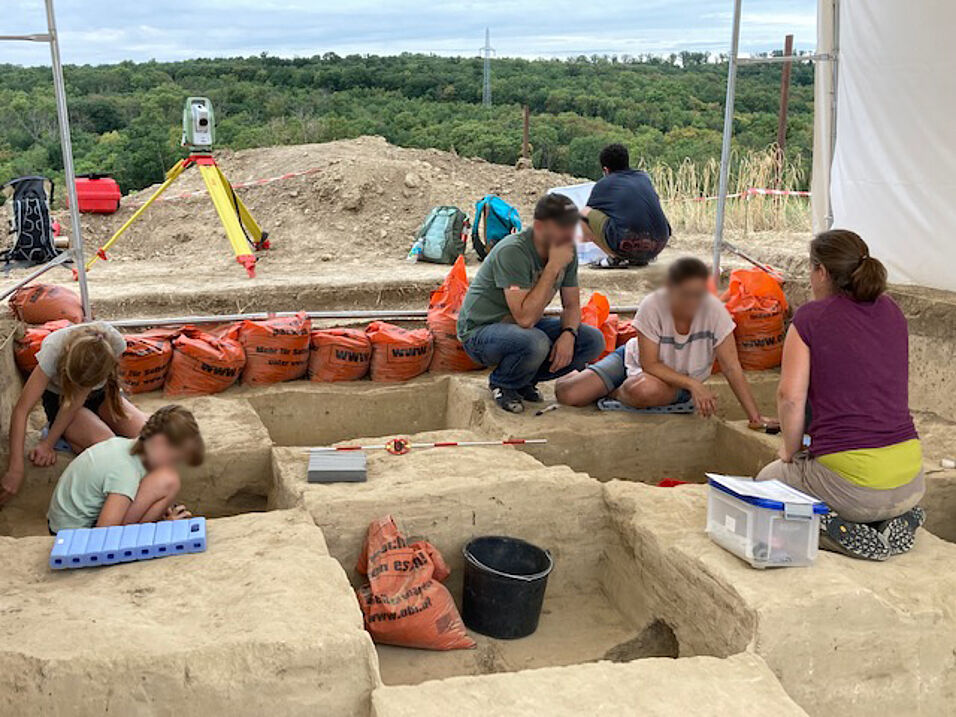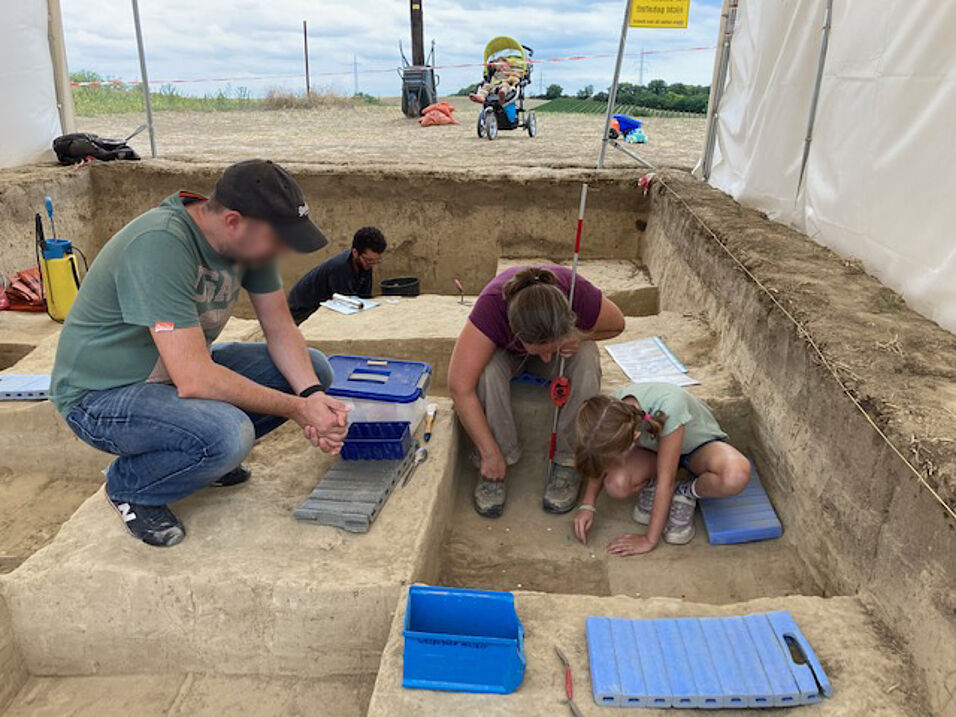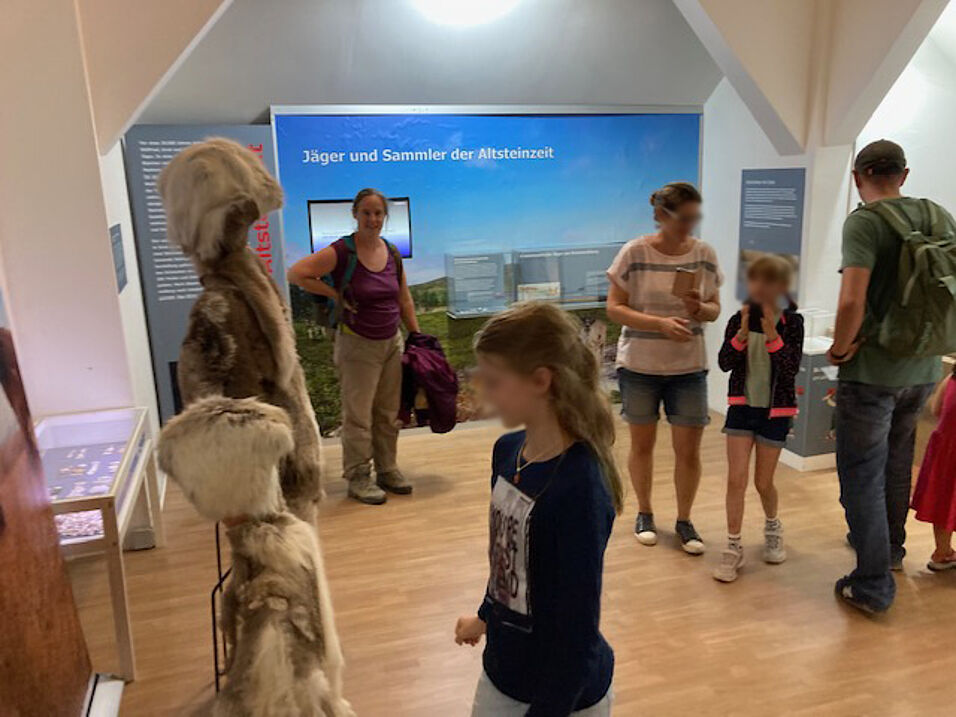Today we spent several hours hosting a few kids from Vienna for a day of the open excavation. They were explained the site and archaeology as well as the excavation process. They could participate in excavating under guidance. Finally, they visited the local Museum Stillfried - Zentrum der Urzeit.




